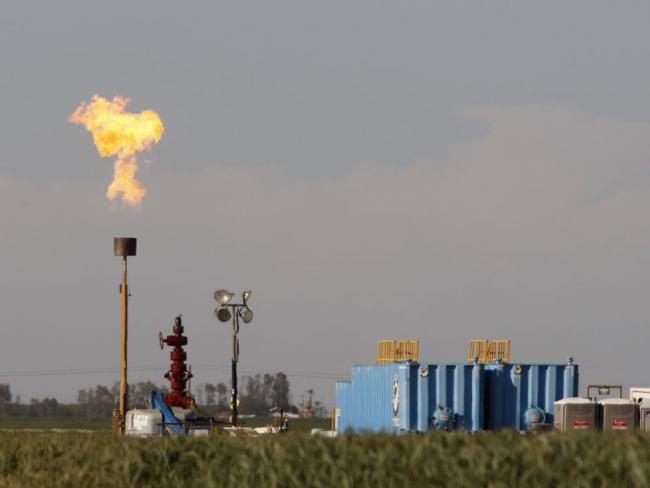Articles Menu

It’s a long weekend and we’re returning from the Gulf Islands on the new B.C. ferry, the Salish Eagle. Along the inside corridor on the main floor, we come face to face with a large mural created by FortisBC extolling the virtues of the natural gas that powers the boat we are on.
One panel assures the reader that CO2 emissions will be reduced by 15 per cent to 25 per cent annually by this new “clean” fuel, and another panel promises a “cleaner, brighter future” through the use of natural gas.
What the ad doesn’t say is that the Salish Eagle’s fuel is fracked gas and that over 85 per cent of our province’s natural gas now comes from fracking, mainly in northeastern B.C.
Fracking is an industrial process used to extract underground natural gas deposits from shale rock. The technique involves drilling a shaft vertically for up to four kilometres into the rock, and then horizontally for up to three more kilometres.
Massive amounts of water, combined with sand and chemicals are injected under high pressure into the well, inducing micro-cracking and fissuring of the rock to release the natural gas known as methane.
The ad fails to inform the reader that the fracking process results in a considerable amount of methane escaping into the atmosphere.
Once released, methane traps 84 times as much heat as carbon dioxide while in the atmosphere. And so far, the technology has not been able to prevent these leaks. Because of this, scientists are concluding that fracking natural gas is actually worse for global warming than oil or coal.
The province recently introduced its new targets for greenhouse gas emissions: a reduction of 40 per cent below 2007 levels by 2030, 60 per cent by 2040, and 80 per cent by 2050. Yet unless an immediate moratorium is declared on new fracking developments, B.C. will fail to meet its own targets.
Then there is the effects of fracking on water use. Each fracking procedure uses more than 10 million litres (36 Olympic-sized swimming pools) of clean water. In parts of the U.S., drinking water wells have dried up due to withdrawals for fracking.
The ad also fails to mention that the chemicals added to frack fluid to help maximize methane extraction have the potential to cause cancer and disrupt hormonal activity in both humans and animals, through the release of polluting and carcinogenic chemicals into the atmosphere and water.
Fracking also produces large amounts of contaminated wastewater containing both the carcinogenic and hormone-disrupting chemicals initially added to the frack fluid, but also radioactive chemicals and heavy metals released from deep underground. One study showed radium levels (a chemical known to cause cancer) in fracked water 200 times greater than background levels. Some of this contaminated water will eventually leak into the water table.
Higher rates of leukemia have been found among people aged five to 24 living near fracking operations. More babies born with congenital heart defects and higher rates of pre-term birth have been found in people who live close to fracking sites. Research has shown an increase in hospital visits among asthmatics living close to fracking sites.
For all these reasons, a recently published article in the peer-reviewed New England Journal of Medicine called for policy makers to reject the false promise of natural gas.
Fracking also causes earthquakes. 62 per cent of significant earthquakes in western Canada between 2010 and 2015 were induced by fracking and 31 per cent by the disposal of fracking wastewater into the ground under high pressure.
In fact, many countries, including England, France, and Germany, have banned fracking, and at least three Canadian provinces have declared various levels of moratoria on fracking because of its known harms.
Many of us living in urban centres in southern B.C. are blissfully unaware of how much fracking is taking place in the northeastern part of the province, where some rural and Aboriginal community members have described themselves as living in a “sacrifice zone.”
Natural gas is not a clean fuel and the misleading advertising on B.C. Ferries should be removed immediately.
Margaret McGregor and Larry Barzelai are Vancouver physicians and members of the Canadian Association of Physicians for the Environment.
[Top photo: Many of us living in urban centres in southern B.C. are blissfully unaware of how much fracking is taking place in the northeastern part of the province. DAVID MCNEW / GETTY IMAGES FILES]